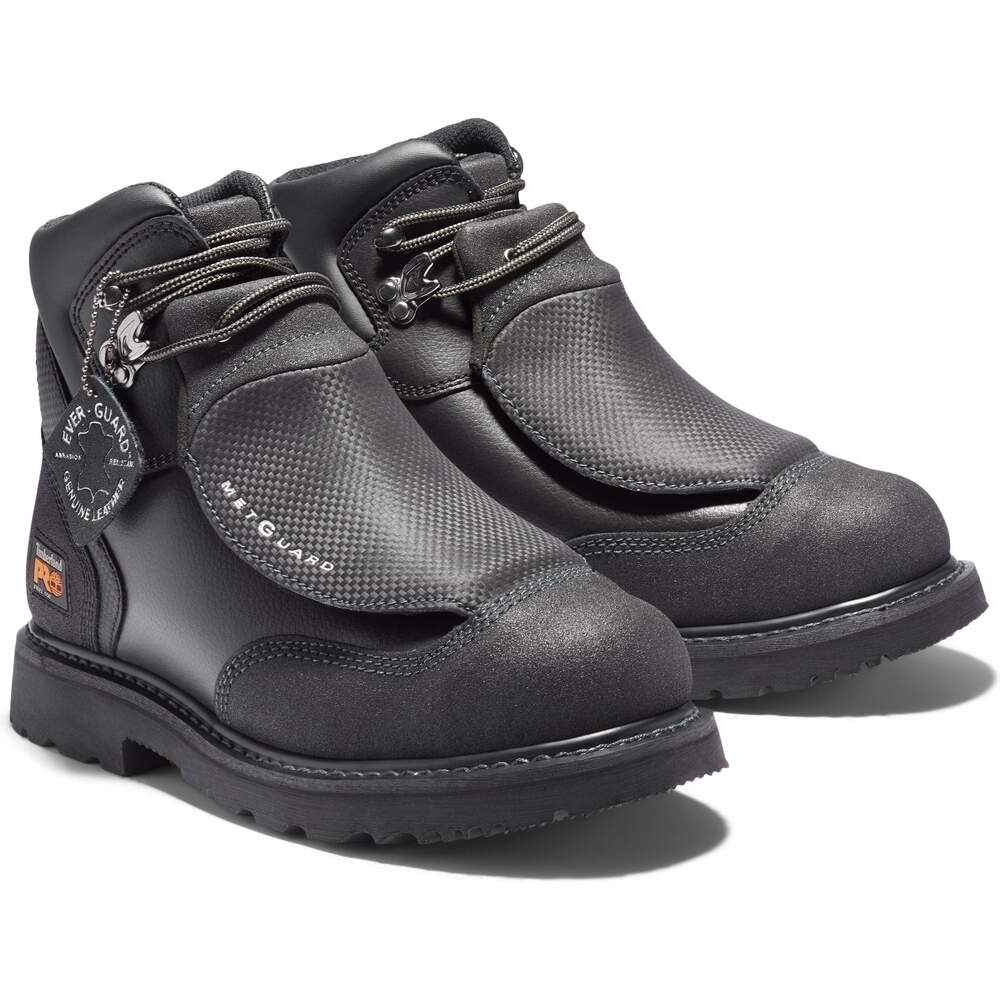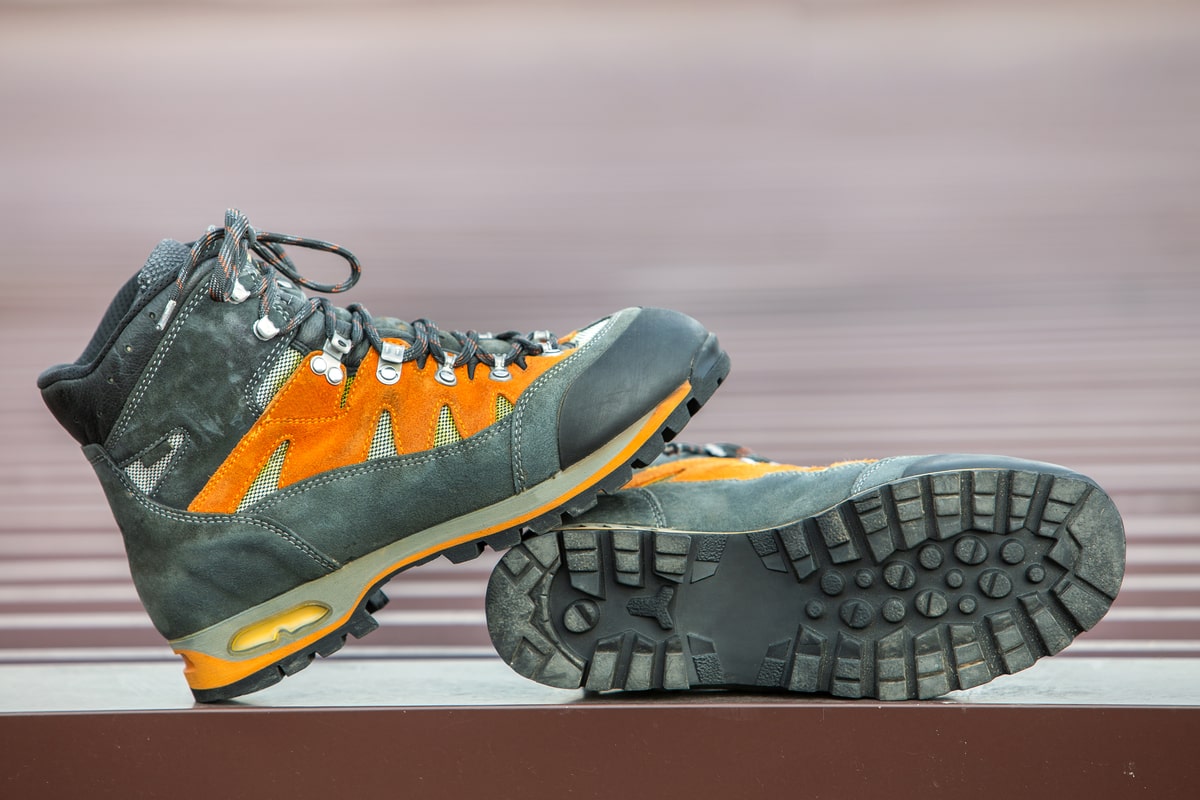Although similar at first glance, 6- and 8-inch boots differ in not only the boot’s height but in the levels of protection and comfort they offer. Work footwear needs to match your job’s safety requirements. That’s why it’s vital to familiarize yourself with different boots and their features.
Explore the differences between 6- inch work boots and 8-inch work boots to choose the right pair for your needs.
6-inch Work Boots






6-inch boots are designed for comfort and flexibility, offering decent ankle and joint support. 6-inch work boots will ensure your feet remain cool by increasing air circulation through the collar. Typically, these boots are lighter and can perform well indoors and outdoors.
8-inch Work Boots
8-inch work boots are designed to deliver extra protection, making them a perfect choice if your job involves various hazards. Their boot shaft height is their main advantage. That’s why they are an excellent choice for outdoor activities where your legs are exposed to scratches, animals, and uneven terrain.
These boots provide more support than 6-inch boots. For that reason, they are great for jobs that demand additional bracing. However, 8-inch boots are typically warmer, meaning they aren’t an optimal choice if you work in a warm climate unless they feature ventilation holes.
6 Inches vs 8 Inches Work Boots Comparison: Flexibility and Comfort

Flexibility
Between the two, 6-inch work boots deliver more flexibility. The low neck lets you put them on and off more easily. You can wear them for indoor and outdoor work, including office. That said, they can be an excellent all-around choice. However, keep in mind that boots this high are better for lighter work, as heavy-duty jobs typically demand 8- or 10-inch boots.
Comfort
Both 6-inch and 8-inch work boots can be comfortable, especially if they are high-quality. Comfort, again, mainly depends on the materials boots are made of and the insoles. Some boot producers create insoles using anti-fatigue technology to ensure your work footwear gives you the comfort you deserve. That’s why it’s a good idea to check the boots’ features to make sure you get the comfort you need at work.
However, how comfortable the boots will be primarily depends on how they fit you. So, ensure you always pick the right size and shape for your feet. For instance, if your feet are wide, choose a square or round-toe design to complement them. You can also insert heel pads or cushioning footbeds to increase their comfort.
Weight
While the boot’s weight mostly depends on its safety features, 8-inch work boots are generally heavier than their 6-inch counterparts. Wearing heavy work boots 8 hours a day, five days a week can lead to sore legs, back pain, and other symptoms, such as plantar fasciitis. That’s why it’s vital to purchase boots only from quality brands you can trust, such as Timberland PRO, that use modern technologies for reducing fatigue and increasing comfort.
Air Circulation
Naturally, the lower neck allows more air circulation, making a 6-inch boot a winner. However, that doesn’t mean 8-inch boots aren’t breathable, as breathability depends mostly on materials. That means a taller boot can be as breathable as a shorter one, if not more.
6 Inches vs 8 Inches Work Boots Comparison: Safety

6-inch work boots and their 8-inch counterparts share similar safety features. You will find many of them feature safety toe caps, whether steel, composite or alloy. Also, both types of boots can be moisture-wicking, slip and heat-resistant, prevent punctures, etc.
These protective features vary depending on the purpose of the boot. Again, that’s why it’s crucial to read their labels and descriptions. These will tell you what to expect from a boot and for which job you should use it. That way, you can get work footwear that meets the requirements of your workplace and perform your daily tasks safely.
Apart from that, these two types of boots offer different levels of protection regarding:
- Ankle support and protection: Although 6-inch boots do an excellent job supporting and protecting your ankles, 8-inch boots do better. If you have a particular health issue with your ankles, 8-inch boots will give you the support you need. Moreover, 8-inch boots are a better choice if you spend most of the time standing or walking during your work because of the additional support. On the other hand, if your ankles are healthy and your job isn’t strenuous to your feet, you will do fine with a 6-inch boot. They are also an excellent choice for everyday wear.
- Weather protection: Water resistance is essential if your work involves wet and humid conditions. Both 6-inch and 8-inch work boots can offer this feature if they are made of water-resistant materials. However, 8-inch boots deliver more protection in this sense because of their height. Insulation protects us from freezing conditions, and 8-inch boots are usually insulated.
Having read that, you can see how and why 8 inches work boots offer more safety for your feet and ankles. They are made to provide extra protection against many hazards you could encounter during your shift. That’s why they are recommended for heavy-duty jobs involving angle grinders, chainsaws, and other heavy equipment.
What to Consider When Purchasing 6-Inch Work Boots
Even though 8 inches work boots provide more protection, 6 inches boots have plenty to offer. Below are several things you should consider when buying this type of boots.
- Durable materials: Full-grain leather is one of the most durable materials you can find on 6-inch boots. Rubber, neoprene, and nylon are also good choices that offer different features. Again, you should base your decision on the type of your work.
- Safety toes: Work boots often feature safety toe caps to protect your toes from impact and compression. You can find steel, alloy, and composite-toe boots. Steel and alloy toes offer exceptional protection, whereas composite toes, although weaker, don’t conduct heat, cold, and electricity, making them an ideal choice if you work in extreme temperatures or near electrical sources.
- Waterproofness: Working outdoors requires work footwear to be waterproof. Waterproof membranes offer the best protection against moisture, so you may want your 6-inch boots to have this feature.
- Slip resistance: 6-inch boots with slip-resistant outsoles not only prevent trips and falls on slippery surfaces but also add traction. That’s especially true if they feature rubber EVA outsoles.
- Cushioned insoles: Many famous footwear brands produce 6-inch work boots with cushioned footbeds to support the feet while increasing comfort. That’s something you would likely want from a boot.
- Mesh lining: Often, these boots have a breathable, moisture-wicking mesh lining. That’s essential when working in warm weather or when moving a lot.
- Top collar padding: Boots with padded top collars help prevent ankle pain. Moreover, they embrace legs better, providing a comfortable fit.
- Electrical hazard rated: This feature may not be important for some, but it's critical for those dealing with electricity.
What to Consider When Purchasing 8-Inch Work Boots






Moving on to 8-inch work boots, here are the things to look out for when buying a pair:
- Durability: Again, durability is critical for any work boot. That’s why you should get your work footwear only from trusted producers who use high-quality materials that can make a boot last a lifetime (provided you take good care of them).
- Cushioned insoles and EVA midsoles: As we mentioned, 8-inch work boots can be comfortable too. Look for these features if you need all the comfort you can get. They will ensure your feet stay comfortable while in them and help prevent fatigue.
- Insulation: Insulated boots are required for jobs that involve cold temperatures. There are several levels of insulation thickness to protect your feet from different grades of cold.
- Slip resistance: 8-inch work boots typically come with slip-resistant outsoles to prevent you from slipping and falling on slippery surfaces and boost traction.
- Safety toes: Like 6-inch work boots, 8-inch boots also often come with safety toes to protect your toes from impact and compression. So, if your job involves such dangers, ensure you get work footwear with toe reinforcements instead of soft toes.
- Vent holes: If you work in warm conditions but still need all the protection you can get, consider buying a pair of 8-inch boots with vent holes near the boot arches for better airflow.
- Waterproofness: Apart from slip resistance, this type of boot also usually comes with a waterproof membrane, such as Gore-Tex, to prevent the moisture from seeping in and keep your feet dry. That is a vital feature to look for if you work outside.
Which Boots Will Best Suit Your Profession?
All jobs are different, and so are work boots. However, many share various similarities. For example, both loggers and construction workers need boots with safety toes. However, loggers will benefit more from wearing 8-inch boots, while 6-inch boots will better suit construction workers. Again, what type of boot you will need primarily depends on the safety requirements of your job site. Let’s look further into detail.
Loggers
Loggers frequently deal with scratches, falling objects, and flying debris. That’s why they need to wear taller boots, such as 8-inch work boots or higher. A high neck will help support your ankle when carrying heavy loads and walking on uneven terrain. Moreover, tall boots do a great job of preventing moisture from entering your work footwear in wet conditions.
Construction workers
6-inch work boots are more suitable for construction workers because they are flexible, lightweight, and mobile while delivering the protection you need. Punctures and compression are the most common injuries at construction sites, meaning a high neck isn’t necessary. However, protective toe caps and shanks are essential.
Police Officers and Military Forces
Police officers often wear 6-inch boots when patrolling for added comfort and flexibility while on the move. On the other hand, military personnel typically require 8 inches work boots for protection from harsh weather, bushes, and slippery roads.
These are only a few examples of jobs requiring a particular type of boots. We can’t stress enough how important it is to check the safety measures of your workplace and choose your work footwear accordingly.
Find the Ideal Work Boots for Your Needs
After reading this article, you know a thing or two about boots' height and what to expect from size 8 and size 6 work boots. They both offer protection and comfort. However, 6-inch work boots deliver more comfort due to their height and lighter construction. Meanwhile, 8-inch work boots provide more protection because of their size and protective features.
As you can see, these types of work footwear are comparable in many ways but behave differently and suit different professions. To find a perfect pair of boots for you, you need to ensure their safety features match your job's requirements. Besides that, you can choose the look you prefer the most, as they come in various styles to suit anyone’s preferences.
Feel free to look at our collection of the best 6-inch work boots and exceptional 8-inch work footwear and find the ideal combination of utility and style.
